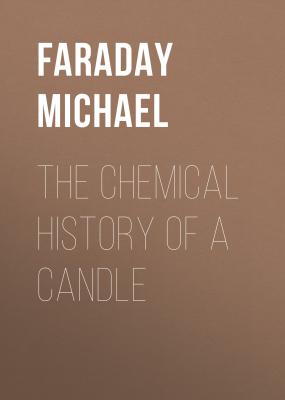The Chemical History of a Candle. Faraday Michael
Читать онлайн.| Название | The Chemical History of a Candle |
|---|---|
| Автор произведения | Faraday Michael |
| Жанр | Химия |
| Серия | |
| Издательство | Химия |
| Год выпуска | 0 |
| isbn |
5
The late Duke of Sussex was, we believe, the first to shew that a prawn might be washed upon this principle. If the tail, after pulling off the fan part, be placed in a tumbler of water, and the head be allowed to hang over the outside, the water will be sucked up the tail by capillary attraction, and will continue to run out through the head until the water in the glass has sunk so low that the tail ceases to dip into it.
6
The alcohol had chloride of copper dissolved in it: this produces a beautiful green flame.
7
Lycopodium is a yellowish powder found in the fruit of the club moss (
8
Bunsen has calculated that the temperature of the oxyhydrogen blowpipe is 8061° Centigrade. Hydrogen burning in air has a temperature of 3259° C., and coal-gas in air, 2350° C.
9
The following is the action of the sulphuric acid in inflaming the mixture of sulphuret of antimony and chlorate of potassa. A portion of the latter is decomposed by the sulphuric acid into oxide of chlorine, bisulphate of potassa, and perchlorate of potassa. The oxide of chlorine inflames the sulphuret of antimony, which is a combustible body, and the whole mass instantly bursts into flame.
10
The "air-burner," which is of such value in the laboratory, owes its advantage to this principle. It consists of a cylindrical metal chimney, covered at the top with a piece of rather coarse iron-wire gauze. This is supported over an argand burner, in such a manner that the gas may mix in the chimney with an amount of air sufficient to burn the carbon and hydrogen simultaneously, so that there may be no separation of carbon in the flame with consequent deposition of soot. The flame, being unable to pass through the wire gauze, burns in a steady, nearly invisible manner above.
